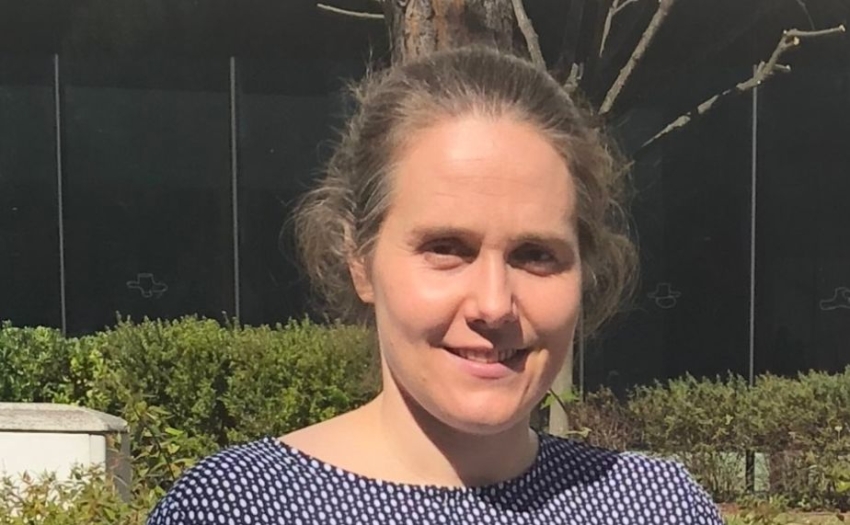News

Interview with Dr. Claire White, Gustavo Colonnetti Medalist 2019
RIM DC: What is your relationship with RILEM, when did you become a member for the first time, has RILEM helped you in your career?
I think I became a RILEM member once I started at Princeton University. I joined once it became apparent that I was really in the area of research in construction materials and I knew the importance of being involved with the organization and helping move our findings from research into industry and implementation.
I had known about RILEM before (joining Princeton) because my supervisors were active in the TCs but during my postdoc (Los Alamos national lab) there was less emphasis on such international connections. Once I joined Princeton I really wanted to make sure I knew what was happening in terms of research around me, how to implement ideas in the industry and the importance of standards.
I think a lot of my research is at a more fundamental level compared to the more applied research that many TCs are doing at RILEM, which may be seen as far removed and not connected with the problems of society that we have to face. But there is a strong link between the fundamental level and applied research that is becoming increasingly emphasized in construction materials and beyond.
RIM DC: so RILEM is your way of being connected to the research society at large?
Yes! And even though I do not perform much applied research I teach about construction materials at the university. I have undergraduates that really like to do mechanical testing on materials, and I think being connected with RILEM helps my teaching by knowing what is going on in industry and what are the most relevant up to date science developments. And students need to know about construction standards, and how we go about changing them. I talk about RILEM with my graduate students, postdocs and undergraduate students, making them aware that this is how we can move towards a more sustainable society but at the same time knowing what are the needs of society.
RIM DC: If you had to explain your work to non-scientists, what would you say?
My research is looking at new ways we can make the world a better place. It takes into account what we can use for construction, such as concrete or steel or other materials, but also it takes into account the fact that with climate change and global warming we need to be confident that the new materials have lower energy demands and CO2 emissions. So I am working on new materials that have less impact on the environment from a climate change perspective. However, we still need to understand how they are going to work in 50-100 years. You cannot wait for 50-100 years and then start to use them because then climate change is going to have run away from us. Therefore, the research that I am actually doing in this context is really understanding the fundamentals of these materials to help us to be able to use them sooner.
RIM DC: Has this always been the motivation of your research (impact on environment)?
It has always been there. I hold a bachelor in civil engineering and one in physics. I was really motivated by the environment so this is how it all came together in my PhD. My research combines my passion in Civil engineering, the environment but also the fundamentals in physics.
RIM DC: What would you like to tell to young researchers out there?
I think what is really important for the younger generation is to really find out what motivates you. And what your passions are that will help you drive forward your ability to make changes and your ability to influence what’s happening in society. Well, let’s say that if you do have that motivation, that internal drive, then it will help in those situations in which you are not feeling so confident, where you are questioning the research you are doing. But at the same time it will give you that boost you need to strike forward and do research that will have an impact. You have the greatest impact when you are motivated by what you are doing. If you are not finding what you are doing exciting and you are not convinced that you are making a change, you are not going to have the biggest impact that you can. For me that comes down to “how can we continue with urbanization and at the same time minimise the associated CO2 emissions?”. We really have to try to push the boundaries to make a positive change.
RIM DC: You talked about quantum mechanics in your presentation…
Yes! I think the thing is to take the right approach or use the right tool to answer the question you want to answer. It started in my PhD. In a physics degree, they teach you about quantum mechanics. So I have always had this drive to understand the small scale aspects of more complex systems. This prompted me to work out how can I be unique in what I do in amongst so many other really excellent colleagues when it comes to research.
RIM DC: Is your job appreciated amongst the RILEM community of more applied scientists?
Hopefully it will get appreciated in decades to come. What I foresee is that there is a lot of research that is done in a way that you can change input parameters and you see different changes. Since we are working in a complex system we do not know if the changes that we are seeing are, for instance, because of the chemistry of the gel that is precipitating or the reaction kinetics that is happening. There might be another phenomenon occurring that we know nothing about! Where I see myself being unique is by using or developing simulation tools that test new types of concrete, together with the experiments. If we want to start using new concretes, we don’t want to make a concrete that has an augmented chemistry and then finding out in 10 year-time that that concrete significantly degrades.
This interview was conducted by Daniela Ciancio, RILEM Implementation Manager.














No comment
Log in to post comment. Log in.